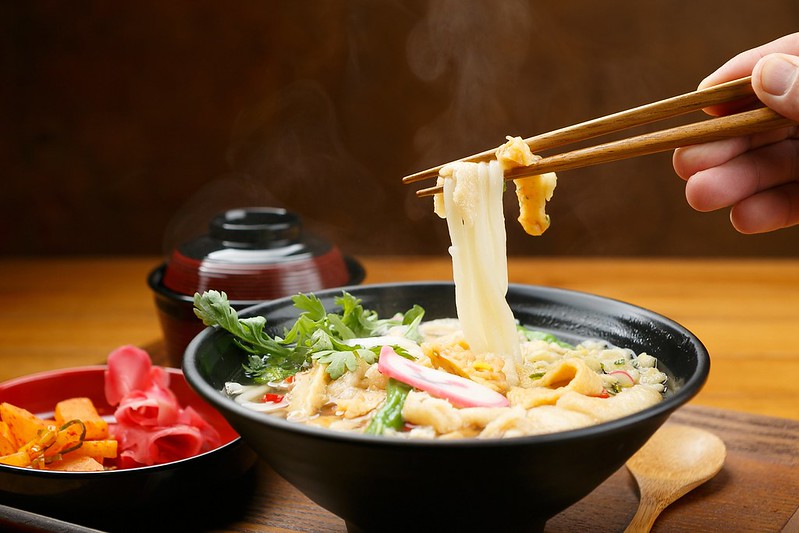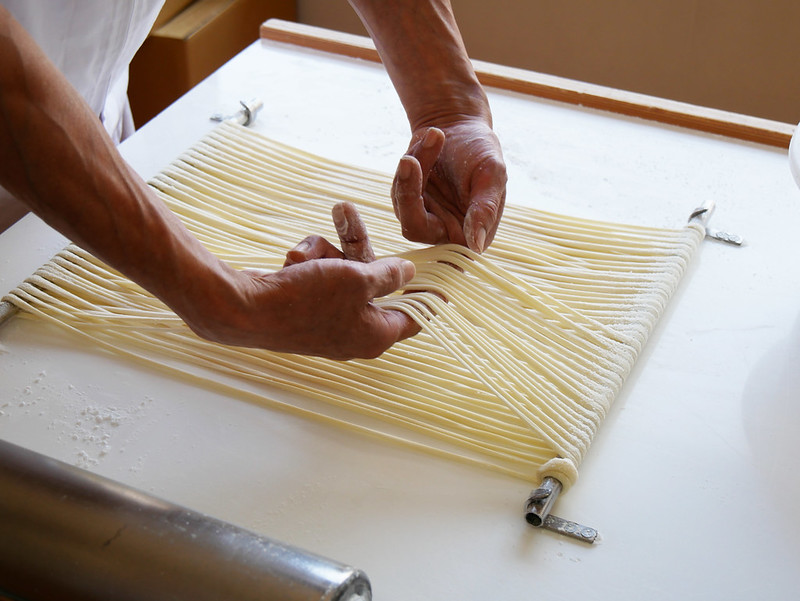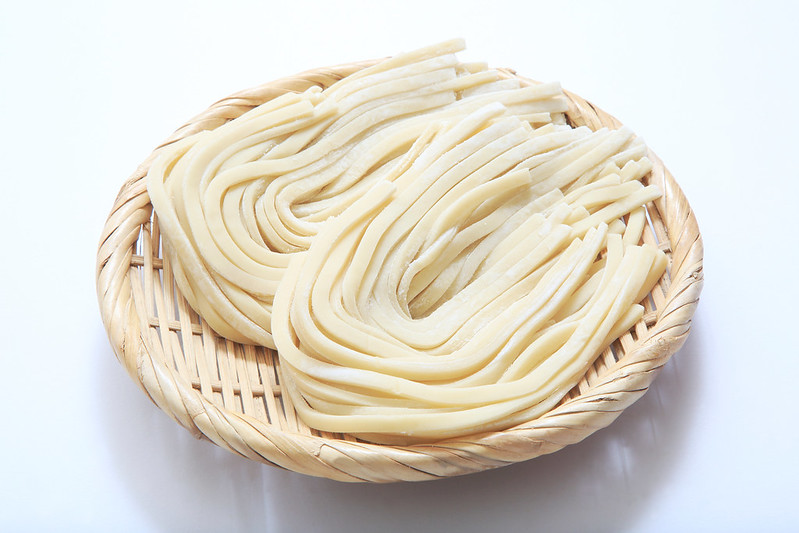
Scrumptious Udon
Udon (饂飩) is the thickest of Japanese noodles. White in color and made from wheat, they can be served either hot or chilled with dipping sauces, in broth, or in an array of other hot dishes. Udon is usually topped with various ingredients like mixed tempura fritters (kakiage), deep fried tofu pockets (aburaage), tempura, or prawn. Some examples of udon dishes include curry udon, kitsune udon, and yakii udon. A thin slice of fish cake (kamaboko) usually completes the dish.
Flavors of the broth used for udon dishes usually vary from region to region. A type of dark brown broth made from soy sauce (koikuchi shōyu) is used usually in eastern Japan and a lighter broth made from light soy sauce (usukuchi shōyu), is used in the western areas.
There are many tales about the origins of udon. One is that in 1241 CE, a Rinzai monk named Enni introduced the technology of flour milling to Japan. Flour was turned into many forms that can be used in Japanese cuisine. Flour products such as noodles like soba and udon as well as pancakes were popular among the locals. Flour milling techniques spread across the country, and by the Edo period, the thicker wheat noodles came to be called udon. It was served with a hot broth called nurumugi and the chilled variety was called hiyamugi.
Another story tells us that during the Nara period, a Japanese envoy was introduced to 14 different kinds of confections while he was in China. One of them was called sakube, also known as muginawa according to the ancient dictionary, the Shinsen Jikyō. Muginawa is the origin of many Japanese noodles. But the muginawa mentioned in the Shinsen Jikyō was made with both wheat and rice flour.
Udon are versatile noodles. The are usually served chilled during the summer and hot in the winter. Ingredients are based on what’s available: almost anything goes great with udon. Although udon is usually prepared with broth, it can also be stir fried. The latest udon craze is from the newest product of the snack and dessert company Bourbon. Their creation is crunchy flavored udon noodles. The flavor is a concoction of seven spices known as “shichimi” and is something amazingly different for udon lovers.
Noodles are a delicious staple in Japan and there are a variety of noodles to choose from that would surely satisfy your hankering for Japanese cuisine. Oishi!


